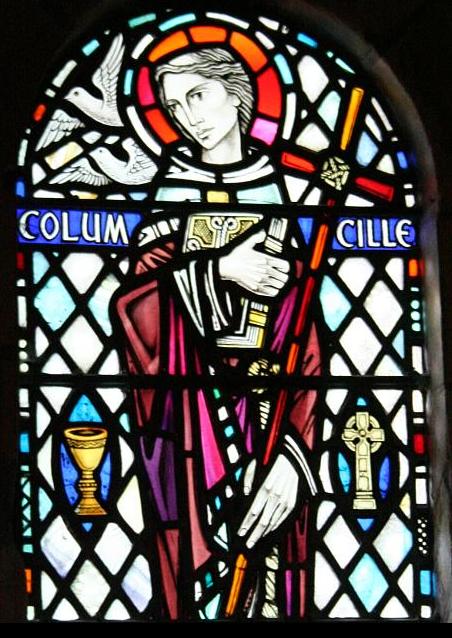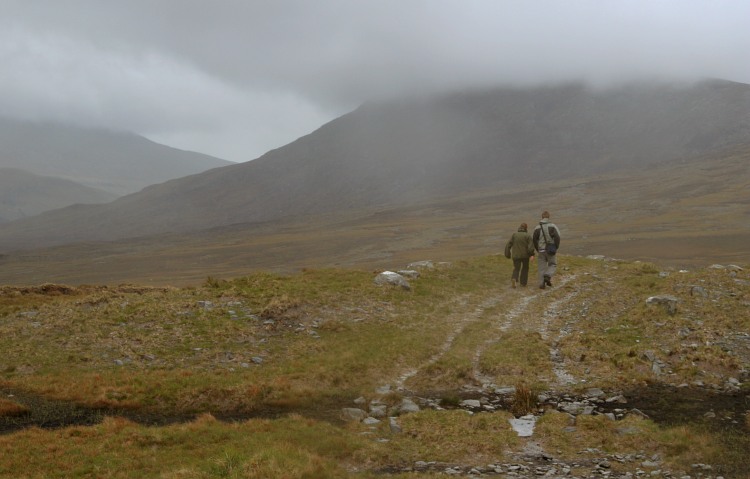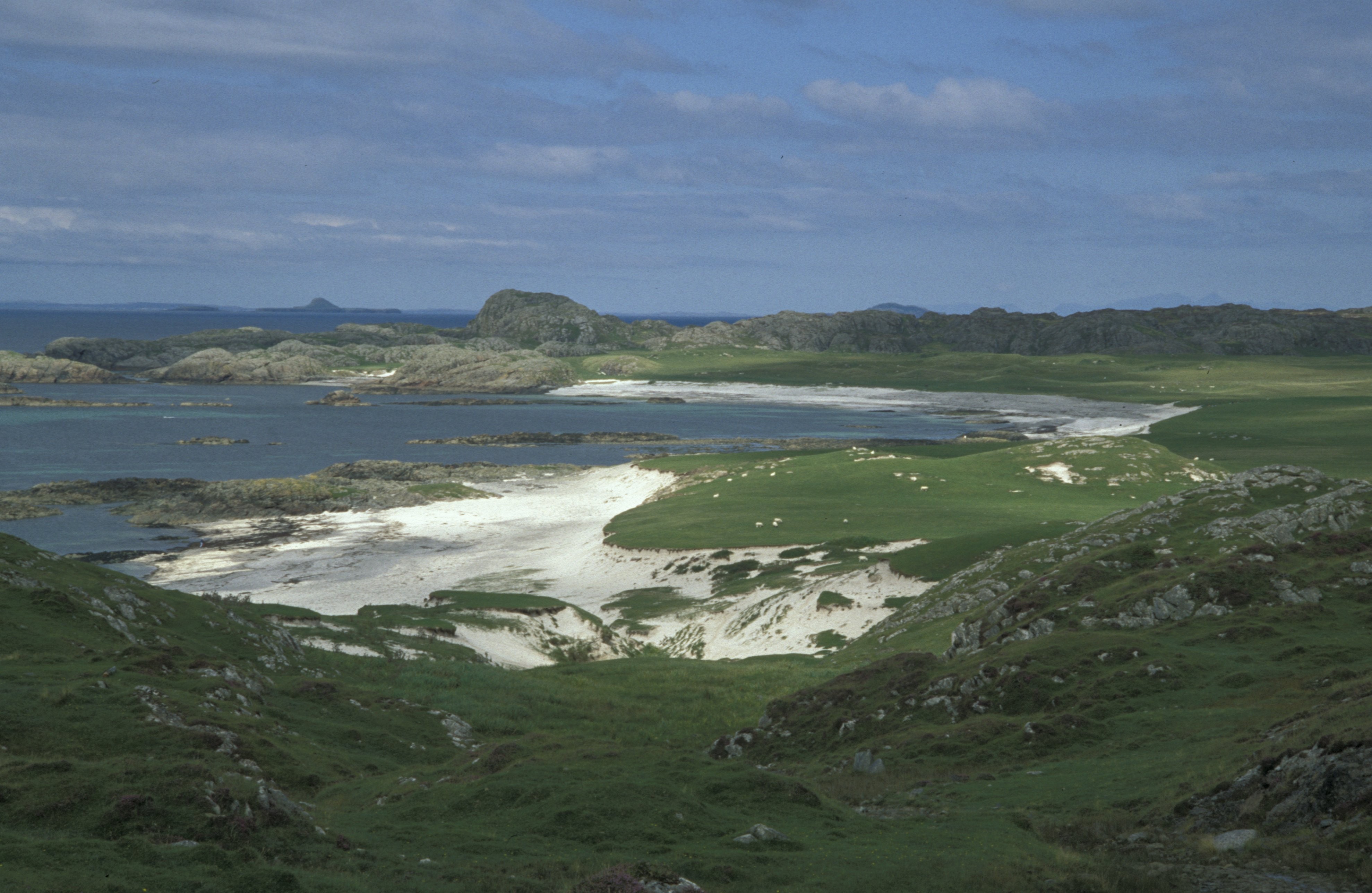|
Cormac Ua Liatháin
Cormac Ua Liatháin was a 6th-century Irish saint who is only known from Adomnan of Iona's ''Vita Columbae''. In Adomnan's narrative, Cormac is mentioned three times. He is described as an anchorite who searches for islands on which to live as a hermit in prayer. It is also said that he is a founder of monasteries. On the first occasion, Columba prophesied that Cormac had just set sail from the district of Erris beyond the river Moy that day to find a place of retreat but found none. Columba said that God would not allow him to find one because he was travelling with a monk who was away without his abbot's permission. On the second occasion, Cormac made a second attempt to find a place of refuge by sailing off into the sea. Columba prophetically knew all about this, and, being in Pictland with King Bridei I at the time and knowing that Cormac would find his way to the Orkney islands, which at the time were a sub-kingdom under the Picts, requested that the King should make sur ... [...More Info...] [...Related Items...] OR: [Wikipedia] [Google] [Baidu] |
Life Of Columba
The ''Life of Columba'' () is a hagiography recounting the life of Columba, the founder of Iona Abbey, written a century after Columba's death by Adomnán, one of his successors as Abbot of Iona. Adomnán (also known as Eunan), served as the ninth Abbot of Iona until his death in 704. James Earle Fraser asserts that Adomnán drew extensively from an existing body of accounts regarding the life of Columba, including a Latin collection entitled ''De uirtutibus sancti Columbae'', composed c. 640 A.D. This earlier work is attributed to Cummene Find, who became the abbot of Iona and served as the leader of the monastic island community from 656 until his death in 668 or 669 A.D. While the ''Vita Columbae'' often conflicts with contemporaneous accounts of various battles, figures, and dates, it remains the most important surviving work from early medieval Scotland and provides a wealth of knowledge regarding the Picts and other ethnic and political groups from this time period. The Vit ... [...More Info...] [...Related Items...] OR: [Wikipedia] [Google] [Baidu] |
Anchorite
In Christianity, an anchorite or anchoret (female: anchoress); () is someone who, for religious reasons, withdraws from secular society to be able to lead an intensely prayer-oriented, Asceticism , ascetic, or Eucharist-focused life. Anchorites are frequently considered to be a type of hermit, but unlike hermits, they were required to take a vow of stability of place, opting for permanent enclosure in cells often attached to churches. Also unlike hermits, anchorites were subject to a religious rite of consecration that closely resembled the funeral rite, following which they would be considered dead to the world and a type of living saint. Anchorites had a certain autonomy, as they did not answer to any ecclesiastical authority apart from bishops. The anchoritic life is one of the earliest forms of Christian monasticism. In the Catholic Church, heremitic life is one of the forms of consecrated life. In England in the Middle Ages, medieval England, the earliest recorded anchor ... [...More Info...] [...Related Items...] OR: [Wikipedia] [Google] [Baidu] |
Erris
Erris is a barony in northwestern County Mayo in Ireland consisting of over , much of which is mountainous blanket bog. It has extensive sea coasts along its west and north boundaries. The main towns are Belmullet and Bangor Erris. The name Erris derives from the Irish 'Iar Ros' meaning 'western promontory'. The full name is the Iorrais Domnann, after the Fir Bolg tribe, the Fir Domnann. To its north is the wild Atlantic Ocean and the bays of Broadhaven and Sruth Fada Conn and to its west is Blacksod Bay. Its main promontories are the Doohoma Peninsula, Mullet Peninsula, Erris Head, the Dún Chiortáin and Dún Chaocháin peninsulas and Benwee Head. There are five Catholic parishes in Erris: Kilcommon, Kilmore, Kiltane, Belmullet and Ballycroy. Gaeltacht Parts of Erris are in a Gaeltacht area, with first-language speakers of Irish in the following areas of the barony: An Fál Mór, Tamhaiin na hUltaí, Glais, Eachléim, Tearmann, Tránn, An Mullach Rua, Car ... [...More Info...] [...Related Items...] OR: [Wikipedia] [Google] [Baidu] |
River Moy
The River Moy () is a river in the west of Ireland. Name Ptolemy's ''Geography'' (2nd century AD) described a river called Λιβνιου (''Libniu'', perhaps from *''lei''- "flow"), which probably referred to the River Moy. The Moy is first named in Adomnán's '' Life of Columba'' (c. 700) as ''Modam fluvium''. Later spellings include ''Muaide, Muadam, Múed, Múaid''; the name ''An Mhuaidh'' is used in modern Irish. The name is possibly derived from the Old Irish word ''muad'', meaning "noble." Geography The Moy rises at the foot of the Ox Mountains in County Sligo. It flows for . For the greater part of its length, it flows southwestward, entering County Mayo and passing near Swinford before passing through Foxford then turning north near the village of Kilmore and heading for the town of Ballina, where it enters the Atlantic Ocean at Killala Bay. The Moy Estuary is long beginning at Ballina and running into Killala Bay. The catchment area of the River Moy is 2,086& ... [...More Info...] [...Related Items...] OR: [Wikipedia] [Google] [Baidu] |
Pictland
The Picts were a group of peoples in what is now Scotland north of the Firth of Forth, in the Early Middle Ages. Where they lived and details of their culture can be gleaned from early medieval texts and Pictish stones. The name appears in written records as an exonym from the late third century AD. They are assumed to have been descendants of the Caledonii and other northern Iron Age tribes. Their territory is referred to as "Pictland" by modern historians. Initially made up of several chiefdoms, it came to be dominated by the Pictish kingdom of Fortriu from the seventh century. During this Verturian hegemony, ''Picti'' was adopted as an endonym. This lasted around 160 years until the Pictish kingdom merged with that of Dál Riata to form the Kingdom of Alba, ruled by the House of Alpin. The concept of "Pictish kingship" continued for a few decades until it was abandoned during the reign of Caustantín mac Áeda. Pictish society was typical of many early medieval societi ... [...More Info...] [...Related Items...] OR: [Wikipedia] [Google] [Baidu] |
Bridei I
Bridei son of Maelchon (died 586) was King of the Picts from 554 to 584. Sources are vague or contradictory regarding him, but it is believed that his court was near Loch Ness and that he may have been a Christian. Several contemporaries also claimed the title "King of the Picts". He died in the mid-580s, possibly in battle, and was succeeded by Gartnait son of Domelch. Historical sources Bridei son of Maelchon was King of the Picts until his death around A.D. 584–586. Other forms of his name include Brude son of Melcho and, in Irish sources, Bruide son of Maelchú and Bruidhe son of Maelchon. He was first mentioned in the Irish annals from 558 to 560, where the ''Annals of Ulster'' report "the migration before Máelchú's son, King Bruide". An earlier entry, reporting the death of "Bruide son of Máelchú" in the ''Annals of Ulster'' for 505 is presumed to be an error. The Ulster annalist does not say who fled, but the later ''Annals of Tigernach'' refers to "the fligh ... [...More Info...] [...Related Items...] OR: [Wikipedia] [Google] [Baidu] |
Orkney
Orkney (), also known as the Orkney Islands, is an archipelago off the north coast of mainland Scotland. The plural name the Orkneys is also sometimes used, but locals now consider it outdated. Part of the Northern Isles along with Shetland, Orkney is 10 miles (16 km) north of Caithness and has about 70 islands, of which 20 are inhabited.Haswell-Smith (2004) pp. 336–403. The largest island, the Mainland, Orkney, Mainland, has an area of , making it the List of islands of Scotland, sixth-largest Scottish island and the List of islands of the British Isles, tenth-largest island in the British Isles. Orkney's largest settlement, and also its administrative centre, is Kirkwall. Orkney is one of the 32 Subdivisions of Scotland, council areas of Scotland, as well as a Orkney (Scottish Parliament constituency), constituency of the Scottish Parliament, a Lieutenancy areas of Scotland, lieutenancy area, and an counties of Scotland, historic county. The local council is Orkney I ... [...More Info...] [...Related Items...] OR: [Wikipedia] [Google] [Baidu] |
Iona
Iona (; , sometimes simply ''Ì'') is an island in the Inner Hebrides, off the Ross of Mull on the western coast of Scotland. It is mainly known for Iona Abbey, though there are other buildings on the island. Iona Abbey was a centre of Gaelic monasticism for three centuries and is today known for its relative tranquility and natural environment. It is a tourist destination and a place for spiritual retreats. Its modern Scottish Gaelic name means "Iona of (Saint) Columba" (formerly anglicised as "Icolmkill"). In 2019, Iona's estimated population was 120. In March 1980, the Hugh Fraser Foundation donated much of the main island (and its off-lying islands) to the current owner, the National Trust for Scotland. The abbey and some church buildings are owned by the Iona Cathedral Trust. One publication, describing the religious significance of the island, says that the island is "known as the birthplace of Celtic Christianity in Scotland,” and notes that “St Columba came here ... [...More Info...] [...Related Items...] OR: [Wikipedia] [Google] [Baidu] |
Cainnech Of Aghaboe
Cainnech of Aghaboe (515/16–600), also known as Saint Canice in Ireland, Saint Kenneth in Scotland, Saint Kenny and in Latin Sanctus Canicus, was an Irish abbot, monastic founder, priest and missionary during the early medieval period. Cainnech is one of the Twelve Apostles of Ireland and preached Christianity across Ireland and to the Picts in Scotland. He wrote a commentary on the Gospels, which for centuries was known as the ''Glas-Choinnigh'' or ''Kenneth's Lock'' or the ''Chain of Cainnech''. Most of what is written about Cainnech's life is based on tradition, however he was considered a man of virtue, great eloquence and learning. His feast day is commemorated on 11 October in the Roman Catholic Church and the Eastern Orthodox Church according to their respective calendars (Gregorian or Church Julian) with additional feast days on 1st or 14 August in the Eastern Orthodox Church. Introduction A lot of what is known of Cainnech comes from legend. However, he is docum ... [...More Info...] [...Related Items...] OR: [Wikipedia] [Google] [Baidu] |
Comgall
Saint Comgall (c. 510–520 – 597/602), an early Irish saint, was the founder and abbot of the great Irish monastery at Bangor in Ireland. MacCaffrey,James (1908). " St. Comgall". In ''Catholic Encyclopedia''. 4. New York: Robert Appleton Company. Life Comgall was born sometime between 510 and 520 in Dál nAraidi, Ulster according to the Irish annals near the place now known as Magheramorne in present-day County Antrim. Comgall's father was Setna, a Pictish warrior; his mother's name was Briga. After serving as a soldier in his early life, he was educated under Fintan of Clonenagh and also studied under Finnian of Movilla, Mobhí Clárainech at Glasnevin, and Ciarán of Clonmacnoise."History of Bangor Abbey", Parish of Bangor Abbey He was ordained deacon and priest by Bishop Lugidius, either at ... [...More Info...] [...Related Items...] OR: [Wikipedia] [Google] [Baidu] |
Brendan The Navigator
Brendan of Clonfert (c. AD 484 – c. 577) is one of the early Celtic Christianity, Irish monastic saints and one of the Twelve Apostles of Ireland. He is also referred to as Brendan the Navigator, Brendan the Voyager, Brendan the Anchorite, and Brendan the Bold. The Irish translation of his name is or . He is mainly known for his legendary voyage to find the "Isle of the Blessed" which is sometimes referred to as "Saint Brendan’s Island". The written narrative of his journey comes from the immram (Voyage of Saint Brendan the Abbot). Saint Brendan's Calendar of saints, feast day is celebrated on 16 May by Catholic Church, Catholics, Anglican Communion, Anglicans, and Eastern Orthodox Church, Orthodox Christians. Sources There is very little secure information concerning Brendan's life, although at least the approximate dates of his birth and death, and accounts of some events in his life, are found in Irish annals and genealogies. The earliest mention of Brendan is in the ... [...More Info...] [...Related Items...] OR: [Wikipedia] [Google] [Baidu] |




